
Men congregate outside a fuel stop along the 2,500 mile highway that cuts east to west across the Brazilian Amazon.
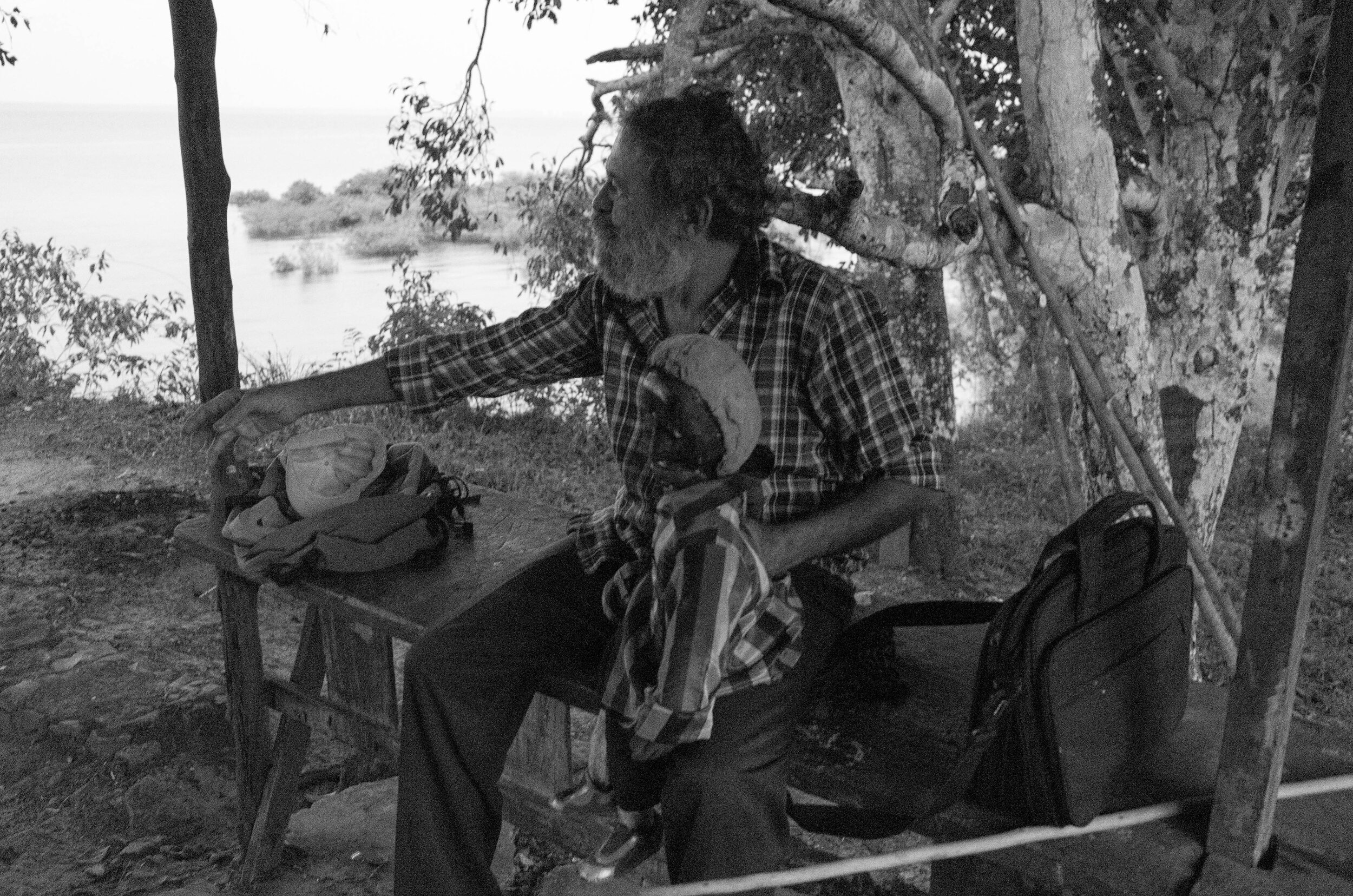
Paulo makes his living selling drinks and snacks to sunbathers along the beaches of the Rio Negro, but during the rainy season, when the water is high and the beaches are submerged, he lives a solitary life in his hut overlooking the swollen river.
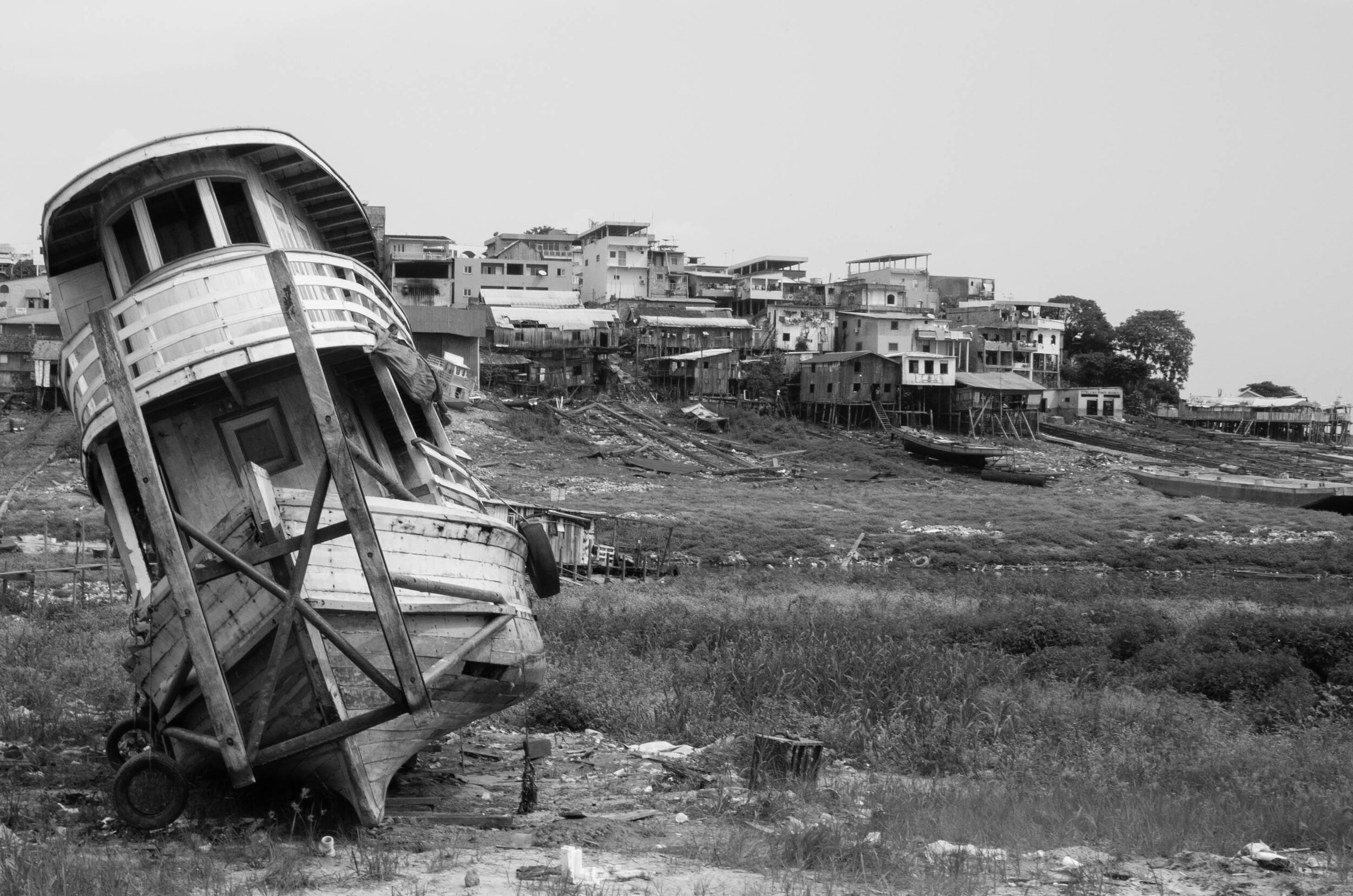
During the dry season in the Brazilian Amazon, a beached riverboat at the Port of Manaus waits for the waters to rise again.

A man walks with his mother in Manaus, Amazonas.

In the early morning hours, when the streets of Manaus, Amazonas are nearly empty, young rollerbladers latch on to cars for a joy ride on the miles of fresh asphalt poured in preparation for the 2014 World Cup and 2016 Olympics.
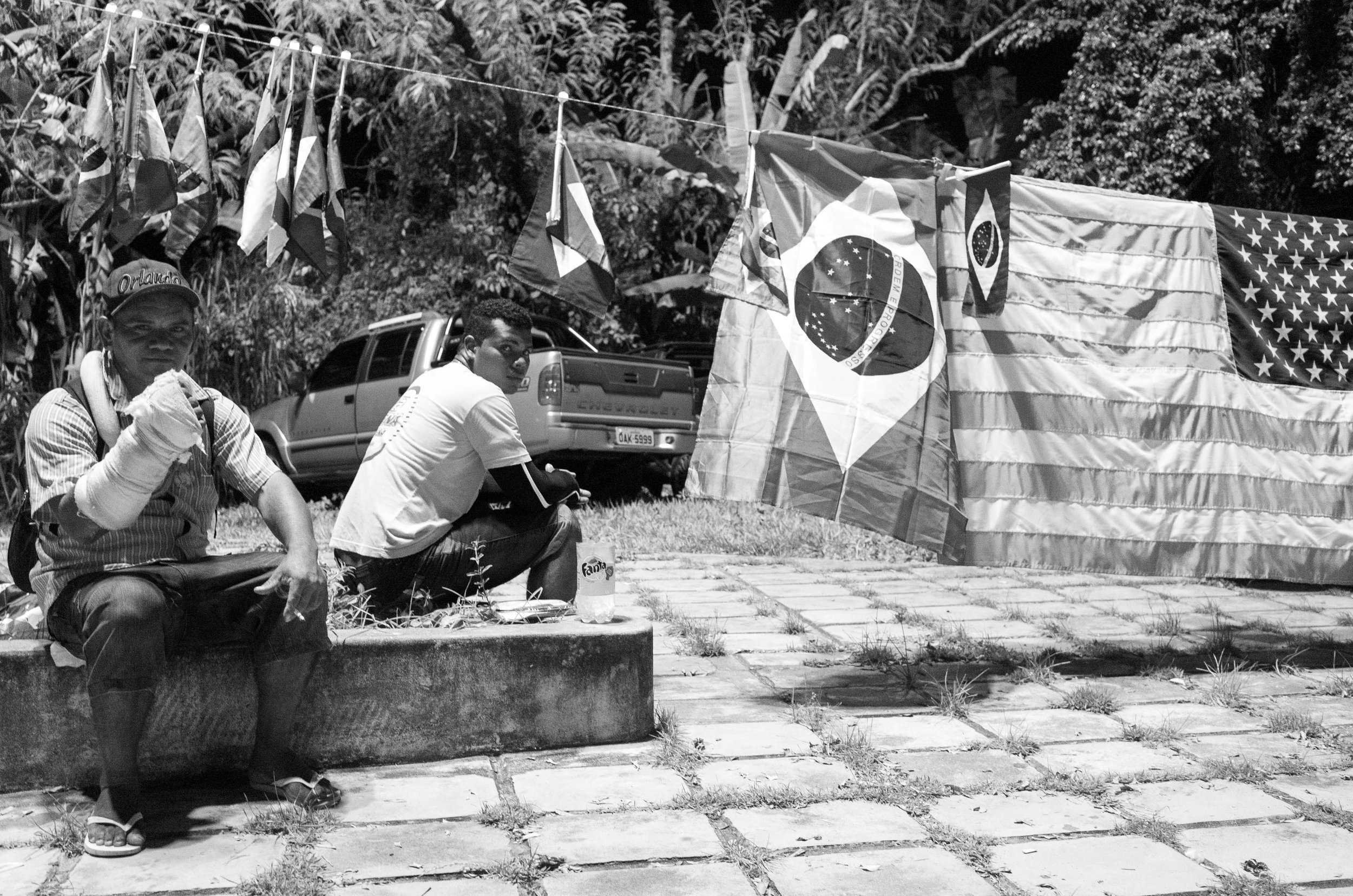
On the eve of an Olympic soccer game in Manaus, vendors sell Brazilian and American flags, hoping to cash in on the flood of international tourists.

On weekend nights, the lights of a carnival in Manaus, Amazonas attract families from miles away.
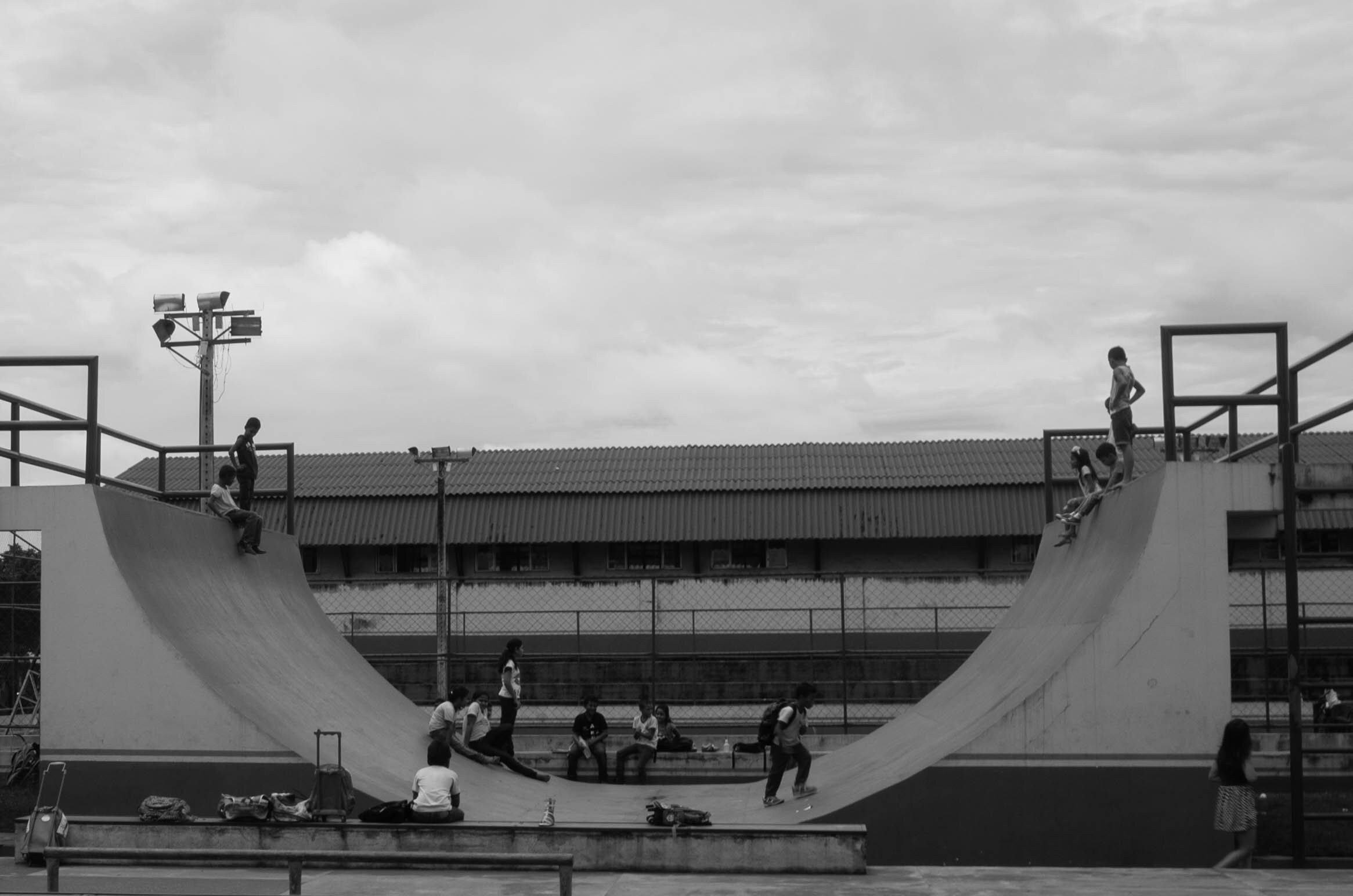
In Altamira, Pará, the hub of construction for Brazil’s Belo Monte hydroelectric dam, children play on a new halfpipe constructed on the waterfront promenade built near their old swimming holes.
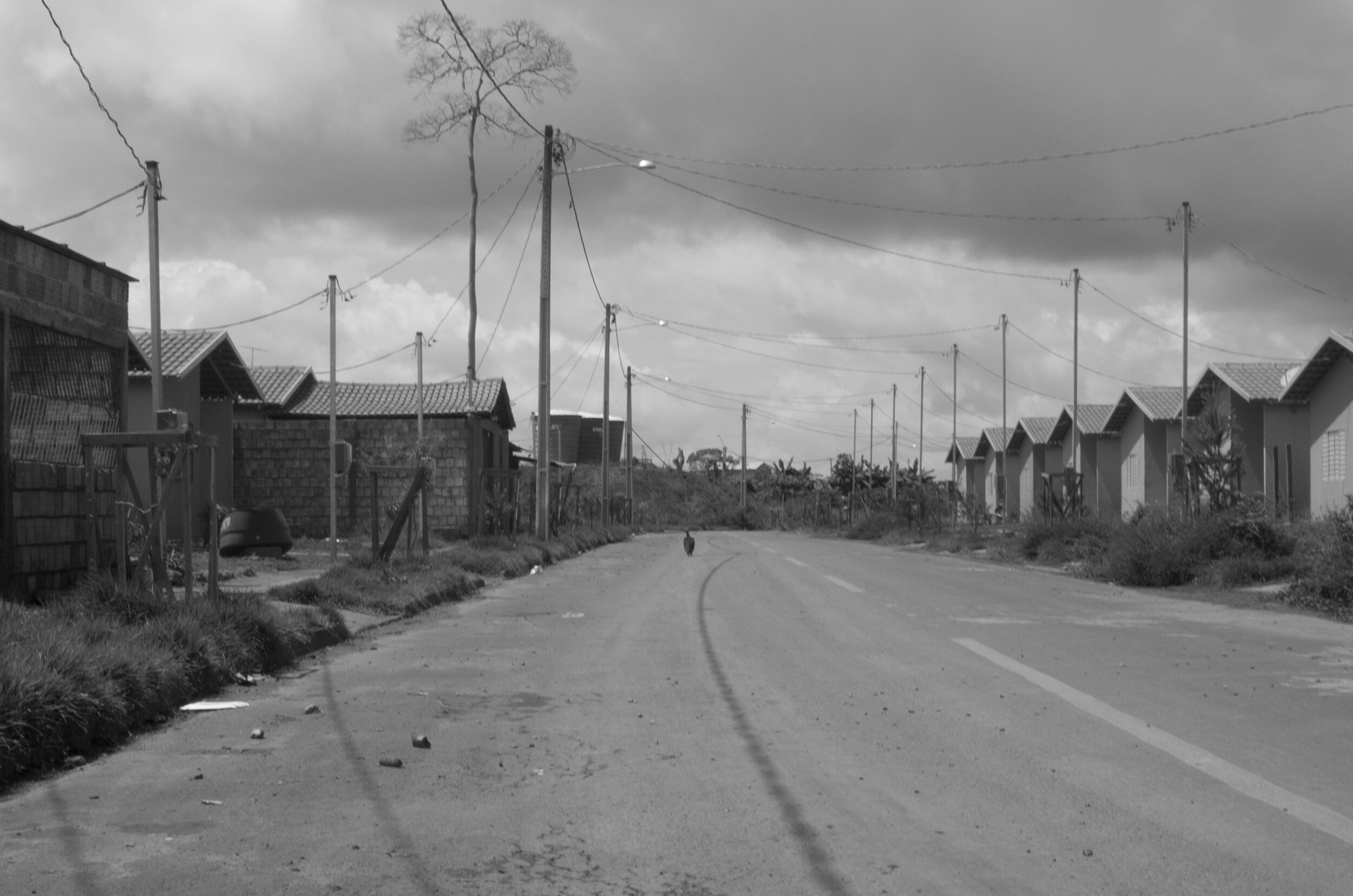
During the construction of Brazil’s Belo Monte hydroelectric dam in Altamira, Pará, thousands of families along the Rio Xingu were relocated from their riverside homes to suburban tract homes built miles away from the water.








